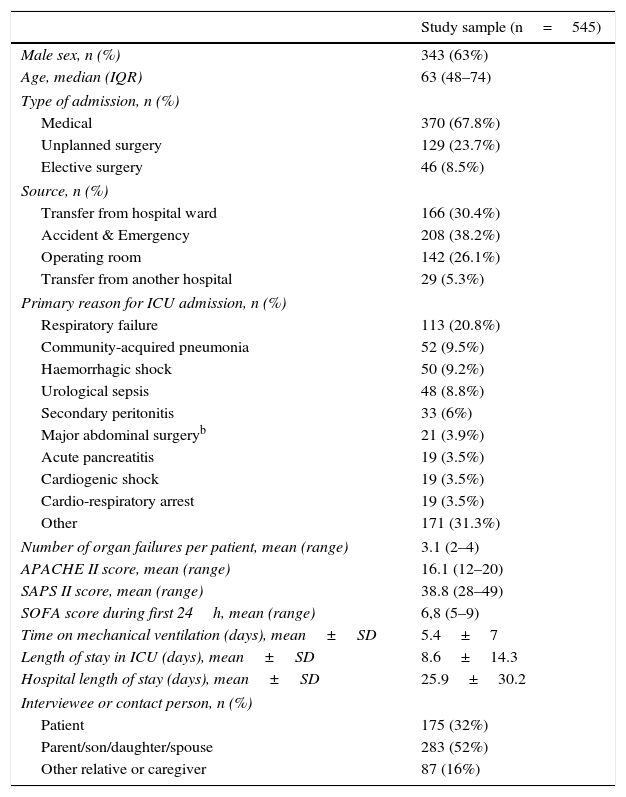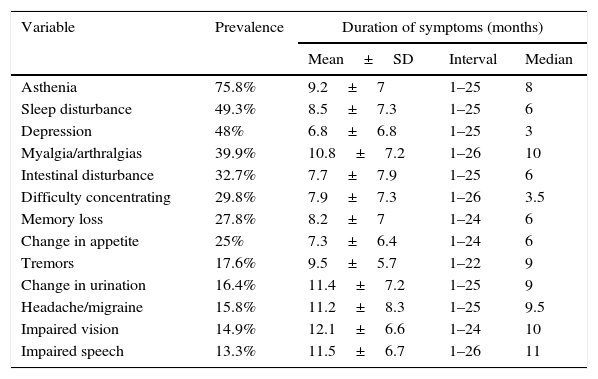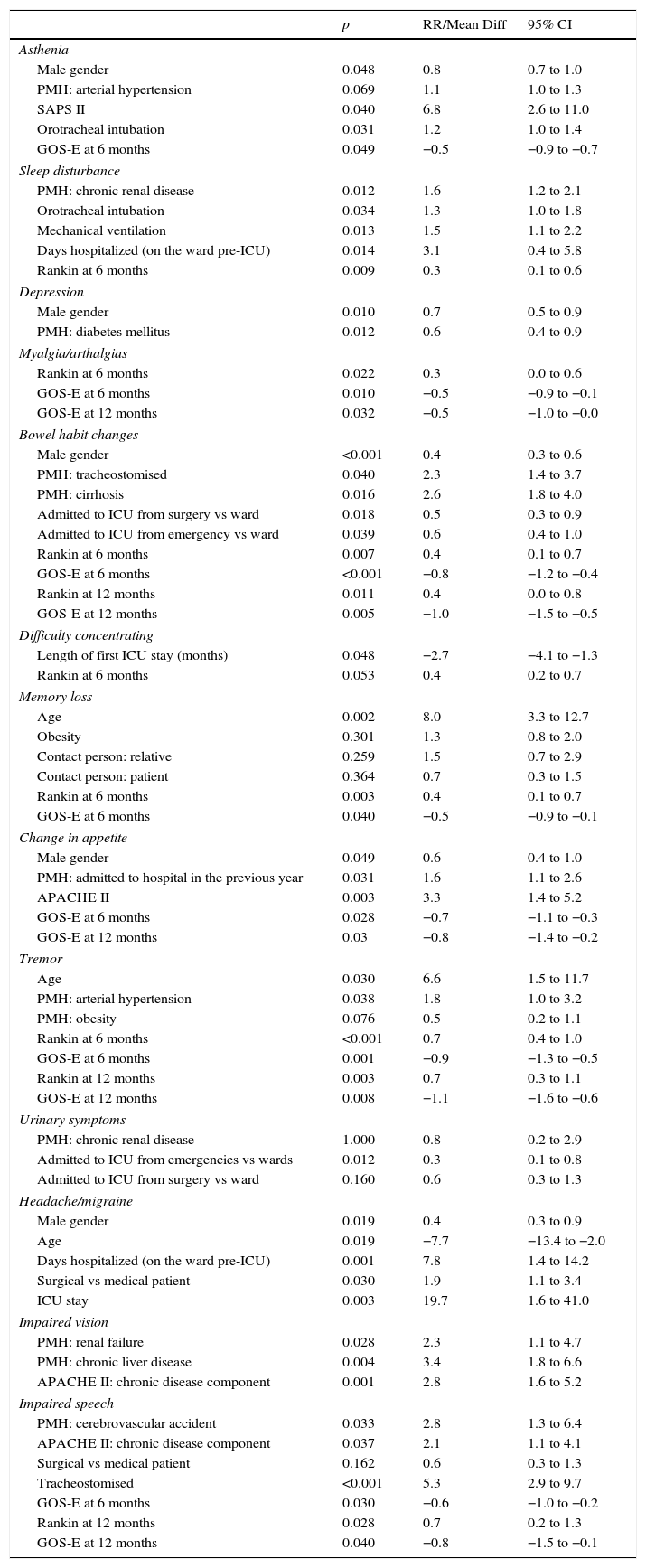To evaluate which residual clinical symptoms multi-organ failure (MOF) patients may exhibit post discharge from Intensive Care Units (ICU) and to identify the associated factors that cause such symptoms.
Material and methodsA total of 545 adult patients admitted to a medical & surgical ICU in Spain diagnosed with MOF on admission were included in the study. Follow up in the form of a telephone survey regarding the patients clinical symptoms were conducted at 6 and 12 months after discharge from ICU.
ResultsA total of 266 patients were followed up at both 6 and 12 months post ICU discharge; 62.2% were male; age 60±18 years; 67.8% medical patients. The most common symptoms to appear following hospital discharge included: asthenia (173; 76%), sleep disturbances (112; 50%) and depression (109; 48%).
ConclusionsThe study revealed frequent residual clinical symptoms persisting for almost a year post ICU discharge, most notably arthromyalgia and asthenia. Depression symptoms during the first 6 months post-hospital discharge were also common among multiple organ failure survivors. The presence of symptomatology over time was found to be related to a poor functional situation at 6 and12 months post ICU discharge, length of hospital stay and severity of illness score on ICU admission.
Evaluar la sintomatología clínica residual que puedan presentar los supervivientes de un fracaso multiorgánico (FMO) tras su alta de la Unidad de Cuidados Intensivos (UCI) e identificar aquellos factores que puedan estar asociados.
Material y métodosFueron seleccionados de forma consecutiva en el estudio un total de 545 pacientes adultos con FMO a su ingreso. Se realizó una encuesta a los 6 y 12 meses tras el alta de una UCI médico-quirúrgica en España. Se realizó una encuesta telefónica sobre los síntomas clínicos presentes al alta de UCI.
ResultadosSe realizó seguimiento a un total de 266 pacientes supervivientes al FMO; un 62,2% eran varones, la edad media fue de 60±18 años y un 67,8% eran pacientes médicos. Los síntomas más comunes presentados tras el alta hospitalaria fueron astenia (173; 76%), alteraciones en el sueño (112; 50%) y depresión (109; 48%).
ConclusionesEl seguimiento reveló la presencia frecuente de síntomas clínicos «residuales» que persistieron al menos un año; de forma más notable, la artromialgia y la astenia. La presencia de síntomas depresivos tras los primeros 6 meses del alta poshospitalaria también fue común entre los pacientes supervivientes de FMO. La duración de la sintomatología se relacionó principalmente con una situación basal pobre a los 6 y 12 meses, un ingreso hospitalario largo y una puntuación de gravedad alta al ingreso en la UCI.










